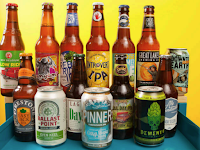On Sept. 23, 1980, I turned 18. In Ohio, that qualified me to enter the exciting world of legal alcohol consumption. Sort of. Ohio was one of a handful of states that clung to a Prohibition-era law that allowed the purchase and consumption of 3.2 percent ABV beer by 18-year-olds while restricting regular beer, wine, and liquor to those 21 and older. The Cullen-Harrison Act, signed about 10 months before the ratification of the 21st amendment and the repeal of Prohibition, was the fulfillment of Franklin Roosevelt’s promise during the 1932 presidential campaign. It redefined alcoholic beverages as those containing more than 3.2 percent alcohol, allowing the sale of low-alcohol beer and wine. There was no scientific or medical justification for 3.2 percent ABV; it was merely a compromise number that could garner the necessary votes for approval.
In 1935, Ohio, after briefly flirting with a legal drinking age of 16, made 18 the legal age for “three-two” beer and 21 the legal age for all other alcoholic beverages. That law would remain in place until the late-1980s. As you might imagine, it was a farce. First of all, the basic logic behind low-alcohol beer was faulty. Most mainstream brews – Budweiser, Miller, Coors – fall somewhere around 5 percent ABV, so to get the same effect, an 18-year-old simply had to drink one-third more. And the reality was, the law was very laxly enforced. Convenience stores, in particular, often turned a blind eye toward “replacement,” where an 18-year-old would take a six-pack of low-alcohol beer to the counter, pay for it, then go back to the cooler and exchange it for a six-pack of the real thing. If confronted by an ATF agent, the clerk would say, “I sold him the three-two. What he did with it afterward is on him.” In 1988, Ohio finally did away with 3.2 percent beer and made 21 the uniform drinking age.
Referencing that Popular Mechanics article, it turns out there are three ways to make low-alcohol, or even no-alcohol, beer. As the name suggests, vacuum distillation introduces regular beer to a vacuum chamber, which lowers its boiling point to around 95 degrees. At that temperature, the alcohol boils off without completely altering the taste. This was the method traditionally used by the large breweries to produce their low-alcohol beers. It requires expensive equipment, and the resulting product loses a lot of the flavor and body.
Reverse osmosis is a newer process in which regular beer is filtered through a special membrane that removes the alcohol. This process also requires complex equipment, but done correctly yields a product that retains more flavor and body.
The lower cost and more natural way to achieve a low-alcohol brew is to stunt the fermentation process before it is complete, typically by chilling the beer to a temperature that inhibits microbial action. This is the method preferred by smaller craft brewers. It requires little in the way of special equipment and produces a low-alcohol product with its own distinctive characteristics while conforming to a type; IPA, stout, pilsner, etc. Often referred to as “session” or “day” beers, they typically have an ABV of 4 percent or less.
Beer, in general, has come a long way since I turned 18. Most stores back then offered eight or 10 different brands, all of which tasted more-or-less the same. These days, even small mom ’n’ pop stores shelve two dozen or more labels, some of them from local craft brewers; IPAs, stouts, pilsners, lagers, kolsches, and just maybe the tasty, full-bodied great-grandson of the nasty three-two beer of my youth.

Comments
Post a Comment